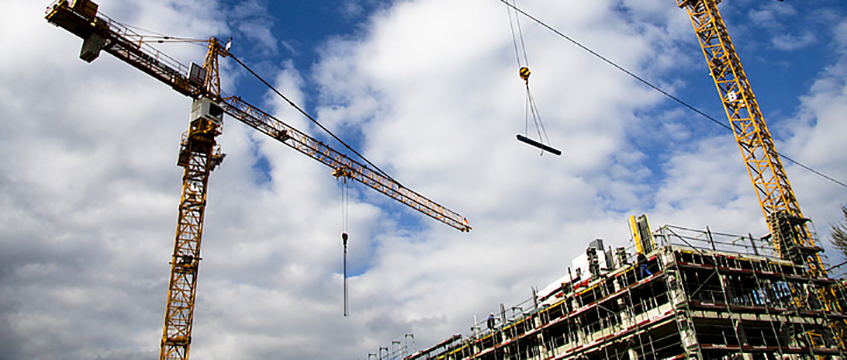Developers are, of course, already familiar with the restrictions imposed on noise emanating from construction sites, which are designed to minimise any disruption caused to the local community.
Industrial-grade cutting equipment and power tools can generate noise well in excess of 100 decibels – about as loud as 100 vacuum cleaners.
Planning permissions and party wall awards often restrict working hours on site and impose other limits, including in relation to noise.
In addition, local authorities have powers to impose further restrictions under the Control of Pollution Act 1974 – which recognises the need to protect the local community from the effects of construction noise.
A number of local authorities publish codes of practice, which provide further guidance on what is expected of those undertaking construction works – many of which describe the levels and frequency of noise that is considered acceptable. While such codes of practice are not legally binding, local authorities will inevitably have regard to them when considering the exercise of their powers under the 1974 Act.
The masking effect
The Covid-19 pandemic has created a number of unique challenges for the construction industry, most obviously in relation to individuals travelling to and working on site, and the production and supply of materials.
It has, however, also had an impact that is less easy to recognise. The stringent lockdown measures that have been imposed across most of the world over the past few months have led to less cars and lorries on the road, less trains on the railway, less aeroplanes in the sky and generally far less commercial and industrial activity. All of which usually generate their own noise, creating the background music against which construction sites usually operate.
This background music has a masking effect, reducing or eliminating the perception of other sounds – including construction noise. Recent studies carried out by members of the Institute of Acoustics suggest that ambient noise levels were on average around six decibels quieter (almost half the subjective noise level) during the full lockdown period. This would make the noise from construction sites appear twice as loud, without any change in on-site activities.
At the time of writing, the data shows that ambient levels have crept back up by around three decibels, which is in line with the “uptick” in transport activity referred to each day in the Downing Street briefings. The nature of the human brain is such, however, that once annoyed by a noise source, a person will subconsciously start to focus on noises at a level which would otherwise have been unremarkable. We are not good at “unhearing” things we find disturbing.
Working patterns
Another impact of Covid-19 that many people will be acutely aware of are the limitations on people’s ability to travel to, and undertake work from, their usual place of work. The result has been that millions have been furloughed from their jobs, and millions more are working from home for extended periods of time.
With many people now spending most of the working day in a different location, the noise from local construction sites is suddenly being heard by people who would not usually be in the vicinity.
Pressures on the construction industry
To complete the picture of the current situation, developers and contractors are under increasing financial, contractual and political pressure to get back to work (for those who closed down their construction, manufacturing or logistics sites), to increase productivity and, more generally, to make up for lost time.
In a ministerial statement made last month, the minister of state for building safety and communities confirmed that planning authorities should take a swift and positive approach to requests from developers for greater flexibility around construction site working hours. When changes to working hours are sought formally through the planning system, the statement notes that authorities should prioritise these applications and ensure that decisions are issued within 10 working days.
Interestingly, the statement expressly recognises that there remains a need to mitigate the impact of such measures on local residents and businesses – especially for local businesses or uses which are particularly sensitive to noise, dust or vibration. However, the statement concludes that requests to extend working hours until 9pm, Monday to Saturday, should not be rejected unless there are very compelling reasons. In areas without residential properties, 24-hour working may be acceptable.
A perfect storm?
There has recently been a marked increase in complaints about the noise from construction sites. That rise appears to be largely attributable to the perfect storm caused by Covid-19 – which has given rise to
(a) less background “music”, thereby reducing the masking effect on construction noise,
(b) more people spending more time at home and
(c) the relaxation of rules, which is intended to help and stimulate the construction industry.
How these tensions might ultimately be resolved remains to be seen. However, it is clear that people’s increased sensitivity to construction noise in the current circumstances needs to be weighed against the crucial role that the construction industry is playing and will play in the country’s economic recovery.
Key points
- The noise generated by construction sites has always been a contentious issue for those living and working in the immediate vicinity of the diggers, jackhammers and piling rigs
- In the context of the Covid-19 pandemic and ongoing lockdown measures, developers and contractors are under increasing pressure to reopen sites, restart work and make up for lost time
- At the same time, there is less background noise from cars, lorries and aeroplanes to mask construction noise and there are more people working from home for extended periods (with all manner of cumulative stress factors)
- All of this is creating a perfect storm of economic pressures on the industry, relaxed rules/enforcement from government and neighbours who may be more sensitive to the noise generated by construction works
Mark Lawrence is a partner at Macfarlanes LLP and Ed Clarke is the managing director of Clarke Saunders Acoustics











